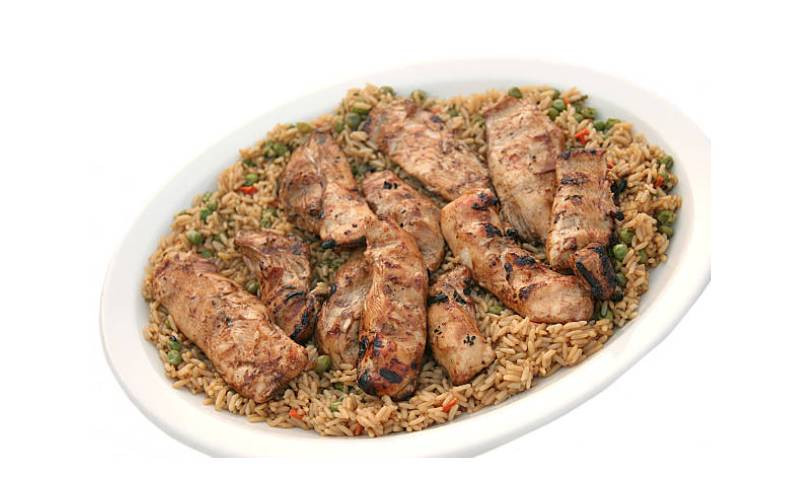
When my baby turned eight months, I noticed a significant reduction in his acceptance of spoon-feeding. In most instances, having spoon-fed him from when he turned six months, my baby grabs the spoon from my hand and tries to feed himself - something he is still learning.
Notably, he also refuses to eat his food - though not all the time - when other family members are not eating.
For this reason, I mixed up the weaning processes, allowing him to feed himself most of the finger foods while still spoon-feeding his other meals. Have you experienced the same after introducing your baby to solid foods? Do you have a challenge deciding which method you should go for?
Today, we explore the phenomenon of 'Baby-Led Weaning' (BLW), why other parents prefer this method to traditional feeding, when and how to go about the process, its benefits, and its concerns.
BLW, a term first coined by Gill Rapley, a former public health nurse in 2003, is an unstructured and relaxed approach based on your baby being offered solid foods and feeding himself or herself with no help, allowing them to experience food through texture, tastes and experience.
This means that babies get to experience family meals by self-feeding and understanding whole foods as opposed to the traditional methods of mashing food and being spoon-fed.
BENEFITS
BLW is an early - and vital - step for babies to foster independence and learn self-regulation as they control what they eat and how much.
- Returning to work after maternity leave
- Teach your children good values at an early age
- Keeping your children busy over the holidays
- Safely include your children in the kitchen with these tips
Keep Reading
Natalia Stasenko, a paediatric dietician and co-writer of Real Baby Food says, "Babies who self-feed cannot realistically be made to eat more than they need since they are feeding independently."
Because of this, experts believe that BLW might protect babies from excess weight gain later in life compared to spoon-fed babies.
Stasenko adds that with spoon-feeding, "Parents can sneak in a couple more spoonfuls even if the baby is full. Doing so frequently will teach the baby to routinely eat more than he needs and stop regulating his intake efficiently."
BLW has also been attributed to promoting fine motor skill development in babies as it encourages the development of hand-eye coordination, which helps them pick up different-sized pieces of food with their fingers.
In addition, when the baby self-feeds the variety of food consistencies and textures, it enables them to work on their jaw strengths, swallowing, and tongue movements.
Dietician Clancy Harrison and author of Feeding Baby, says "Baby-led weaning supports the development of hand-eye coordination, chewing skills, dexterity, and healthy eating habits," adding that "It also offers babies an opportunity to explore the taste, texture, aroma, and colour of a variety of foods."
WHEN TO START BLW
The recommended age to start baby-led weaning is from six months onwards, like the alternative - spoon-feeding.
Research shows that by that age, most babies display signs of developmental readiness, including sitting upright with little or no support, having good neck strength, and reaching for objects - picking them up and bringing them to their mouth.
However, despite most babies reaching developmental milestones by six months, experts say babies with developmental delays or neurological issues should start solids the conventional way.
For some children, strong chewing skills might not develop until month nine, which is why experts believe the baby-led weaning process will help develop those chewing skills.
When I went through a baby-led weaning Facebook community group looking for suggestions on what to feed my baby, I was baffled by some recommendations, with a section of mothers suggesting improbable foods such as crackers and even drumsticks.
For that reason, experts recommend starting with single-ingredient foods to pinpoint any food allergies and to avoid the baby choking.
Examples of first-finger food include steamed broccoli, omelettes cut into small pieces, shredded meat, or strips of chicken and fruits such as avocado and banana. The foods to avoid include hard-textured and raw vegetables like carrots, crunchy, hard food like popcorn or nuts, and whole, round fruits like berries or grapes.
CONCERNS AROUND BLW
Since the baby controls what and how much they eat, some parents have raised concerns about whether baby-led weaning provides enough varied and nutritious diet. Some observational studies even pointed out iron and energy inadequacy risks.
A study by Morrison et al showed that even though the total energy intake was similar between a traditional spoon-fed and a BLW group of infants, the baby-led infants appeared to consume more total fat and saturated fat than those spoon-fed.
However, to ensure infants get the required nutrients and calories, the originators on BLW recommend continued frequency and volume of milk feedings and offering the baby milk feeding before solid foods.
Another relevant concern regards the quality of the meals consumed by baby-led infants. Since most homemade purees and commercial infant foods usually do not include salt or sugar, there are concerns that family foods may only sometimes be suitable for infants, mainly due to the mode of cooking and dressing.
Lastly, and a less serious disadvantage of the baby-led weaning approach, is the mess created by babies while exploring different foods as they are free to throw spaghetti on the floor, cover themselves in yoghurt, or mash their sweet potatoes into their hair.
 The Standard Group Plc is a multi-media organization with investments in media platforms spanning newspaper print
operations, television, radio broadcasting, digital and online services. The Standard Group is recognized as a
leading multi-media house in Kenya with a key influence in matters of national and international interest.
The Standard Group Plc is a multi-media organization with investments in media platforms spanning newspaper print
operations, television, radio broadcasting, digital and online services. The Standard Group is recognized as a
leading multi-media house in Kenya with a key influence in matters of national and international interest.

